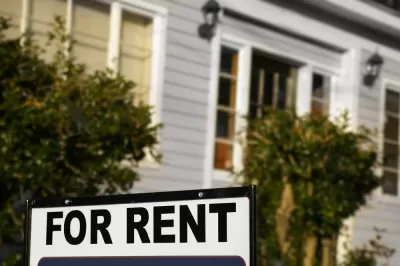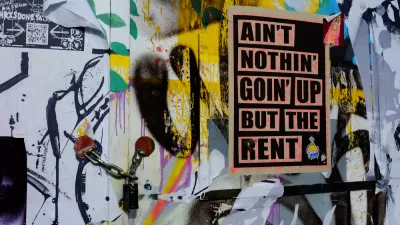Close to one-third of American neighborhoods have very few housing options for renter households, who tend to be disproportionately people of color and low-income families.

An article by Whitney Airgood-Obrycki and Sophia Wedeen for the Joint Center for Housing Studies of Harvard University highlights the lack of available rental housing in many suburban, higher-income neighborhoods, as revealed by a new analysis of data from the American Community Survey.
This matters because “Exclusionary land use quite likely contributes to the presence of these rental deserts and the resulting patterns of socioeconomic and racial segregation, since renters are disproportionately lower-income and people of color,” the authors write.
According to the authors’ definition, ‘rental deserts,’ which make up roughly 31 percent of residential neighborhoods in the United States, exist when less than 20 percent of housing units in an area are available or occupied as rentals. “With few affordable options for lower-income renters, the median household income in rental deserts is $86,000. Median incomes in high-rental neighborhoods, however, are less than half that at $42,000, while mixed-tenure neighborhoods fall in the middle at about $60,000.”
In rental deserts, less than 21 percent of household heads were people of color, compared to 67 percent in high-rental neighborhoods. “Increasing the multifamily supply and increasing rental options in neighborhoods where few exist can help expand the geographic options available to renters, and reducing zoning barriers is a step in the right direction.”
The report recommends zoning changes, but cautions that they’re not a silver bullet. “Building homes at lower price points and expanding housing subsidies in a range of neighborhoods will also be necessary to create socioeconomically integrated, mixed-tenure communities.”
FULL STORY: RENTAL DESERTS PERPETUATE SOCIOECONOMIC AND RACIAL SEGREGATION

Maui's Vacation Rental Debate Turns Ugly
Verbal attacks, misinformation campaigns and fistfights plague a high-stakes debate to convert thousands of vacation rentals into long-term housing.

Planetizen Federal Action Tracker
A weekly monitor of how Trump’s orders and actions are impacting planners and planning in America.

San Francisco Suspends Traffic Calming Amidst Record Deaths
Citing “a challenging fiscal landscape,” the city will cease the program on the heels of 42 traffic deaths, including 24 pedestrians.

Defunct Pittsburgh Power Plant to Become Residential Tower
A decommissioned steam heat plant will be redeveloped into almost 100 affordable housing units.

Trump Prompts Restructuring of Transportation Research Board in “Unprecedented Overreach”
The TRB has eliminated more than half of its committees including those focused on climate, equity, and cities.

Amtrak Rolls Out New Orleans to Alabama “Mardi Gras” Train
The new service will operate morning and evening departures between Mobile and New Orleans.
Urban Design for Planners 1: Software Tools
This six-course series explores essential urban design concepts using open source software and equips planners with the tools they need to participate fully in the urban design process.
Planning for Universal Design
Learn the tools for implementing Universal Design in planning regulations.
Heyer Gruel & Associates PA
JM Goldson LLC
Custer County Colorado
City of Camden Redevelopment Agency
City of Astoria
Transportation Research & Education Center (TREC) at Portland State University
Jefferson Parish Government
Camden Redevelopment Agency
City of Claremont





























